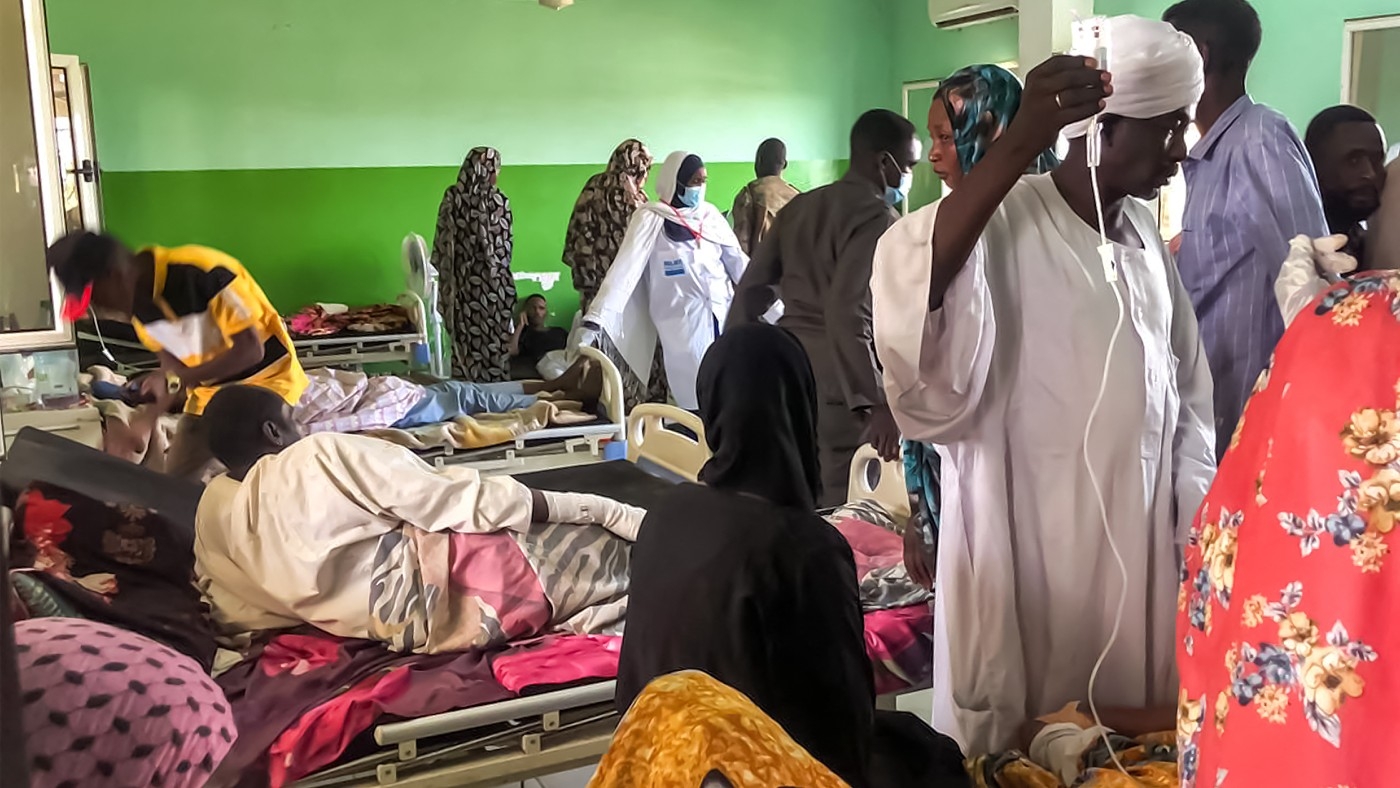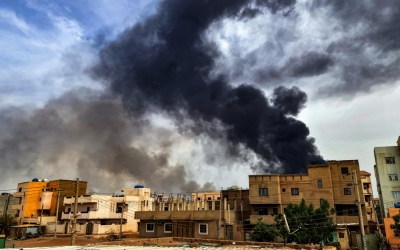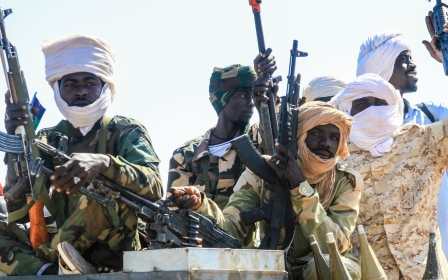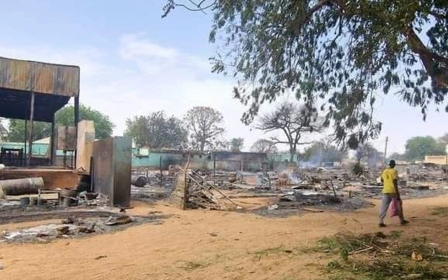Sudan: El-Fasher faces massacre as final fight for Darfur looms

Sudanese and international experts are warning of a massacre that could generate “Hiroshima and Nagasaki-level casualties” in the Darfur city of el-Fasher, which is surrounded by the paramilitary Rapid Support Forces (RSF).
The estimated one million civilians inside the state capital of North Darfur now have no clear escape routes, meaning the city could become a “kill box” in the event of an attack.
The Sudanese Armed Forces (SAF), which have been at war with the RSF since 15 April last year, remain in control of el-Fasher, the only city in western Sudan's sprawling Darfur region in its hands.
But with the RSF controlling all roads leading in and out of el-Fasher, the army has had to equip its new recruits using air drops. With a final battle for Darfur imminent, army units are expecting a fight to the death.
Observers say the RSF is moving heavy weaponry into the area. Sources in el-Fasher said that the paramilitary force was looting goods being brought into the city. SAF troop movements suggest the RSF already has combatants in the eastern part of the city.
New MEE newsletter: Jerusalem Dispatch
Sign up to get the latest insights and analysis on Israel-Palestine, alongside Turkey Unpacked and other MEE newsletters
In the last fortnight, the RSF has burned at least 11 villages in the neighbouring North Darfur countryside to the ground. Villagers have been forced to flee to the city, meaning the area’s entire population is now there.
The situation is exacerbated by the presence of the region's largest camp for internally displaced people (IDPs), Zamzam, located just 12 km outside the city.
The route between RSF fighters and the city leads through the camp, which is home to hundreds of thousands of people, many of whom are from the non-Arab groups the RSF has been targeting throughout the war.
Last week, the Raoul Wallenberg Centre found that there was “clear and convincing evidence” that the Rapid Support Forces is committing genocide against “non-Arab groups” in Darfur. The Black Massalit group has been particularly targeted.
Sources on the ground told Middle East Eye that Zamzam is protected by the forces of Minni Minnawi, a former rebel leader and governor of Darfur who is now fighting alongside the army.
Of the estimated one million people in el-Fasher, an estimated 700,000 are IDPs. Over 8 million Sudanese have been displaced by the war.
Previously a vibrant centre for activists, human rights defenders and others, el-Fasher also has the only hospital that has been treating survivors of sexual violence that has taken place since the war began.
'Death, hunger, thirst'
Tagaldeen, a resident of Abu Shouk IDP camp in el-Fasher, told an emergency online media briefing attended by Middle East Eye that he knew of 38 separate vehicles that had been stopped and ransacked by the RSF.
He said that the price of fuel in el-Fasher had more than doubled and this was set to have a catastrophic impact on the availability of drinking water in the city. Around 95 percent of el-Fasher’s potable water is dependent on generators that run on fuel.
'This situation can potentially generate Hiroshima and Nagasaki-level casualties'
- Nathaniel Raymond, Yale Humanitarian Research Lab
“The RSF is threatening citizens with death, hunger and thirst,” said Tagaldeen, who could not give his second name for security reasons. “Medical personnel have fled the city, leaving patients without anyone to treat them. Many have died already as a result.”
Nathaniel Raymond, executive director of Yale’s Humanitarian Research Lab, which has been closely monitoring the conflict, outlined three main circumstances that would result in mass civilian death in el-Fasher.
He said civilians could die from the deprivation of humanitarian aid, including food, water and medicine; they could die in crossfire; or they could be directly targeted by the RSF.
“We have a city about to be under siege,” Raymond told the briefing. “The situation for those in el-Fasher will likely get significantly worse in the coming hours and days. Civilians don't have a clear escape route. We call this a kill box.“
Raymond said he believed the risk of mass atrocities and targeted ethnic killings was “inevitable” and that the situation was going to get “significantly worse” in the next few days and weeks.
“I want to be clear here. 9/11 was 3,000 people. There's been 40,000 civilian casualties in Gaza. This situation can potentially generate Hiroshima and Nagasaki-level casualties,” Raymond said. The US atomic bombs detonated above the Japanese cities of Hiroshima and Nagasaki in August 1945 killed an estimated 215,000 people.
On Wednesday, the United States called for an “immediate cessation of attacks in el-Fasher”. It condemned both the RSF and the army’s “indiscriminate aerial bombardments in the region”.
Hala al-Karib, the regional director of the Strategic Initiative for Women in the Horn of Africa (SIHA) drew a comparion the unfolding events in el-Fasher and those of el-Geneina, the state capital of West Darfur, where the RSF and allied Arab militias massacred the local Massalit population, leaving the streets of the city strewn with corpses.
“It's so unfortunate that we are going to go through the same situation similar to what happened in el-Geneina. We cannot do anything other than waiting and anticipating what will happen," she said, describing the situation as "a massacre in the making”.
Karib also emphasised the support the RSF receives from the United Arab Emirates, its main patron, and said she believed the paramilitary force was closely consulting with the Emiratis.
The RSF has previously told Middle East Eye that it does not receive support from the UAE, despite extensive evidence of supply routes between the two.
As of Thursday, the UAE appeared to be continuing to resupply the RSF via cargo planes landing in Chad.
This article is available in French on Middle East Eye French edition.
Middle East Eye delivers independent and unrivalled coverage and analysis of the Middle East, North Africa and beyond. To learn more about republishing this content and the associated fees, please fill out this form. More about MEE can be found here.





